Without Pruning, Raspberry Plants Become Crowded And Diseased – Follow These Steps


Elizabeth is a Permaculture Garden Designer, Sustainability Consultant and Professional Writer, working as an advocate for positive change. She graduated from the University of St. Andrews with an MA in English and Philosophy and obtained a Diploma in Applied Permaculture Design from the Permaculture Association.
Reviewed By PETER LICKORISH

Peter is a Horticulture Lecturer and self-employed Horticulturist, with a passion for diverse areas of the industry - from garden design to the science behind plant growth and propagation. He has completed the Royal Horticultural Society’s Master of Horticulture (MHort) Award and lectures on RHS courses at Bedford College.
RASPBERRY GUIDES
Containers
Pruning
Raspberries are delicious and are also very easy to grow in many UK gardens.
These delicious soft fruits are one of my favourites and one I would definitely recommend if you are new to growing soft fruits.
They won’t take up a lot of your time when growing but will still provide abundant yields, and there are a number of different varieties to choose from.
One job that you do need to think about when growing raspberries is pruning.
“Without correct pruning, plants simply do not have the air-flow and light they need to crop well,” shares Peter Lickorish, a Horticultural Consultant.
“Eventually, your raspberry plant will be so crowded with unproductive canes, all acting as an entry point for disease, that there simply won’t be room for those with fruiting potential to grow.”
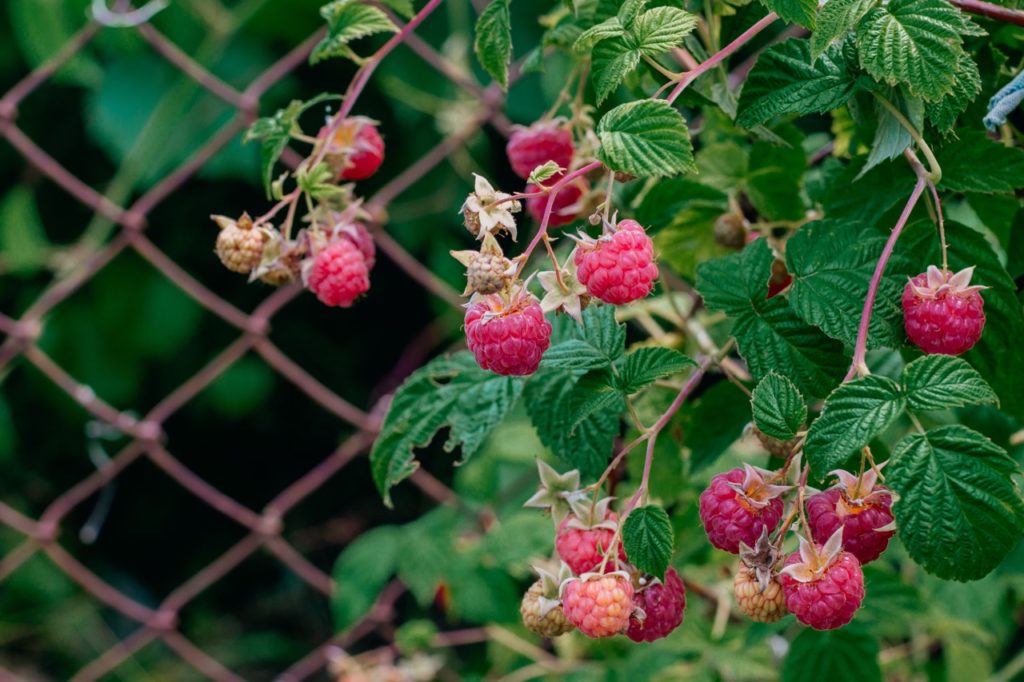
However, learning how to prune raspberries is simple as long as you know which type of raspberries you are growing.
The key thing to determine when trying to work out how to prune raspberries is whether you are growing summer or autumn fruiting types.
Though autumn fruiters may yield in late summer, they grow differently – hence why plants are categorised as summer or autumn fruiting.
The two categories your raspberries fall into will dictate the pruning process.
Pruning Summer Fruiting Varieties
When To Prune
These raspberries, which bear fruit on the growth of the previous year, are pruned after the berries have been harvested.
The floricanes, those stems which have flowered and fruited, are removed once they begin to die back.
You can see the difference between these and this year’s fresh green growth.
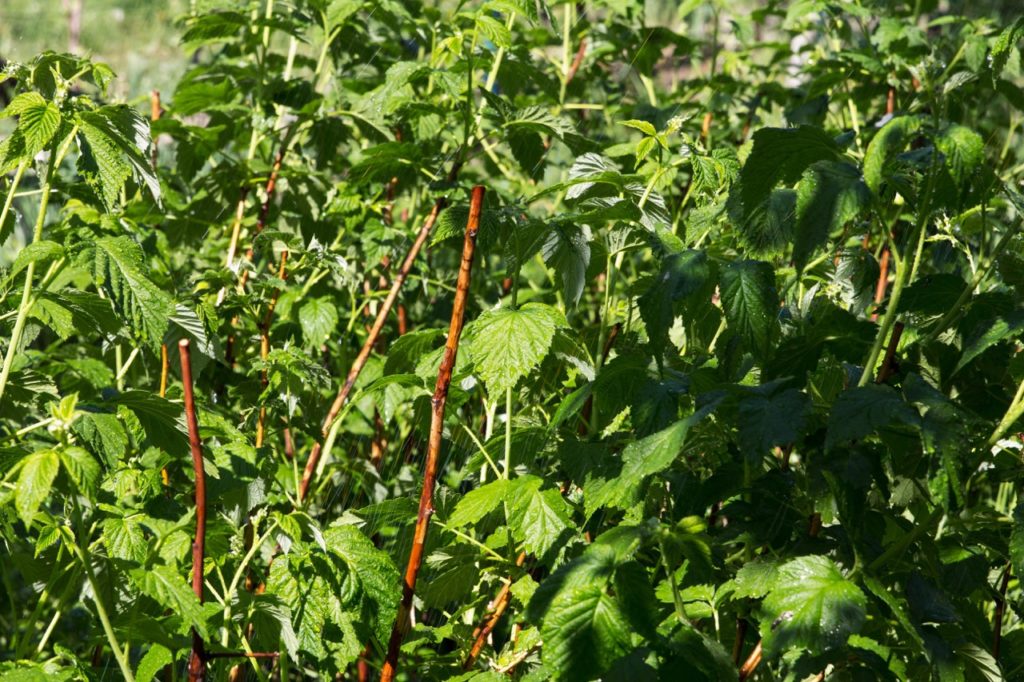
If you wish to prune to restrict height, then this should be done in late winter, around February.
Sometimes, you may also wish to prune out excess or unwanted primocanes (new canes) in early spring.
How To Prune Summer Fruiting Varieties
The main thing to remember when pruning these raspberries is that you only want to remove ones that have already fruited (floricanes) and not the primocanes.
Remember, the canes that grew this year will turn into floricanes and bear raspberries next year.

If you prune these out then you will deprive yourself of next year’s fruits.
The only time that you may wish to get rid of some primocanes is if your raspberry patch or row has become too congested.
In that case, you may wish to thin out some of these.
As mentioned above, a good time to thin these out is in early spring, but don’t thin out primocanes until the plant is at least 3 years old, as doing so may reduce yield and vigour too excessively.
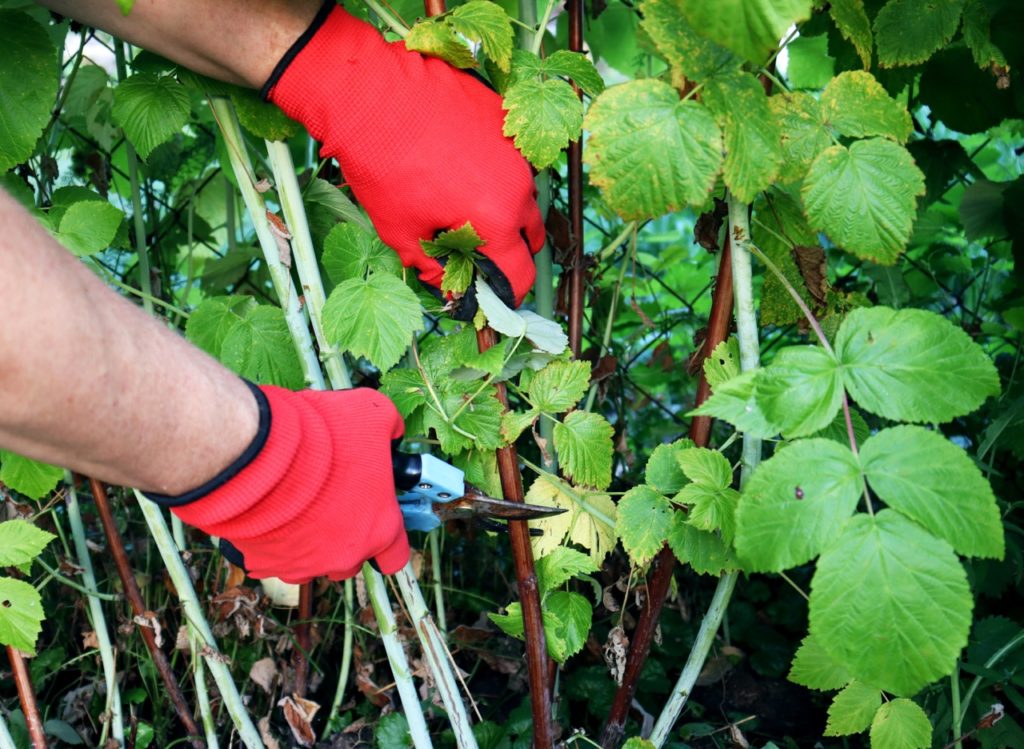
To identify the floricanes to remove, look for the brown or greyish colour of the stems and for those that have a more brittle texture.
This will help to provide a clear contrast with the pliable green primocanes.
Use a pair of clean, sharp shears or secateurs to cut the floricanes as close to ground level as possible.
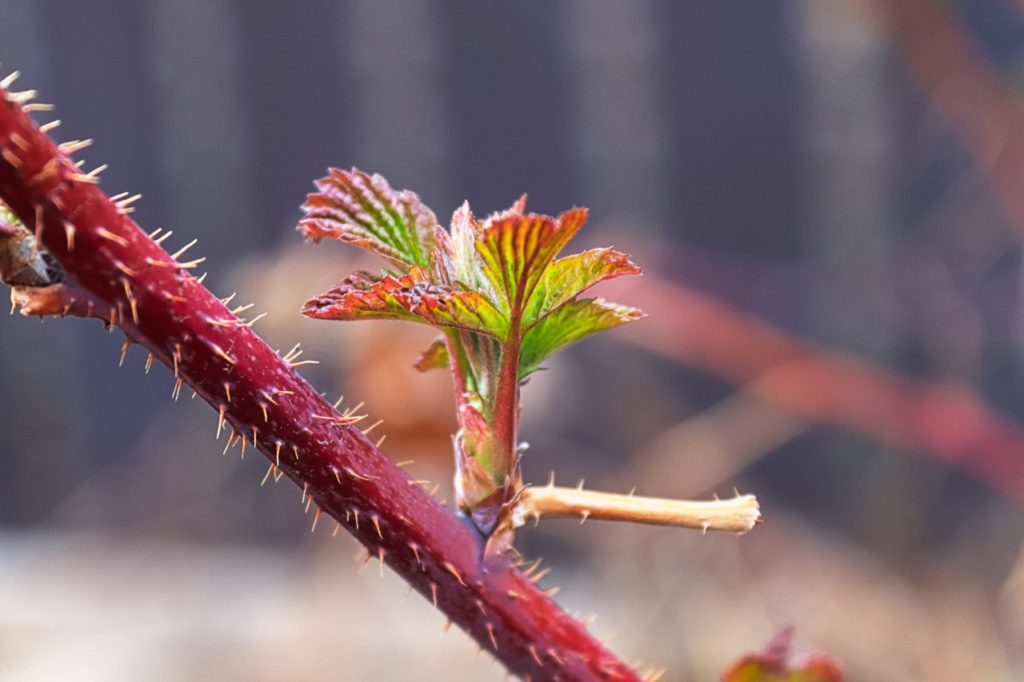
Leave the green canes to grow on and tie these into your support structure if there is one in place.
If you wish to remove primocanes, you can also cut these off at ground level.
If you decide that you would like to restrict the height of the raspberries in February so they don’t outgrow their support, simply trim off the tops of the canes to the required height.
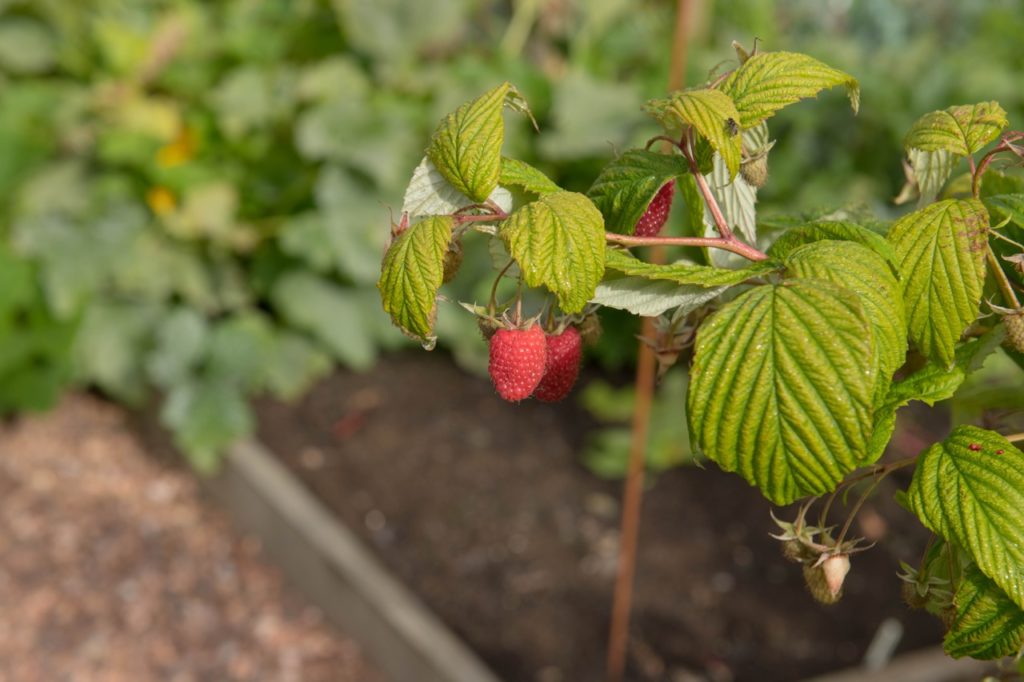
You should aim for around 10cm above the top of their support structure or to a height that you personally can comfortably reach.
Pruning Autumn Varieties
When To Prune
Raspberries that produce berries on this season’s growth, called primocanes, are best pruned in late winter.
I typically carry out this job in February.
“I do make sure I have gloves on for pruning raspberries, as their stems are scratchy,” says Peter.
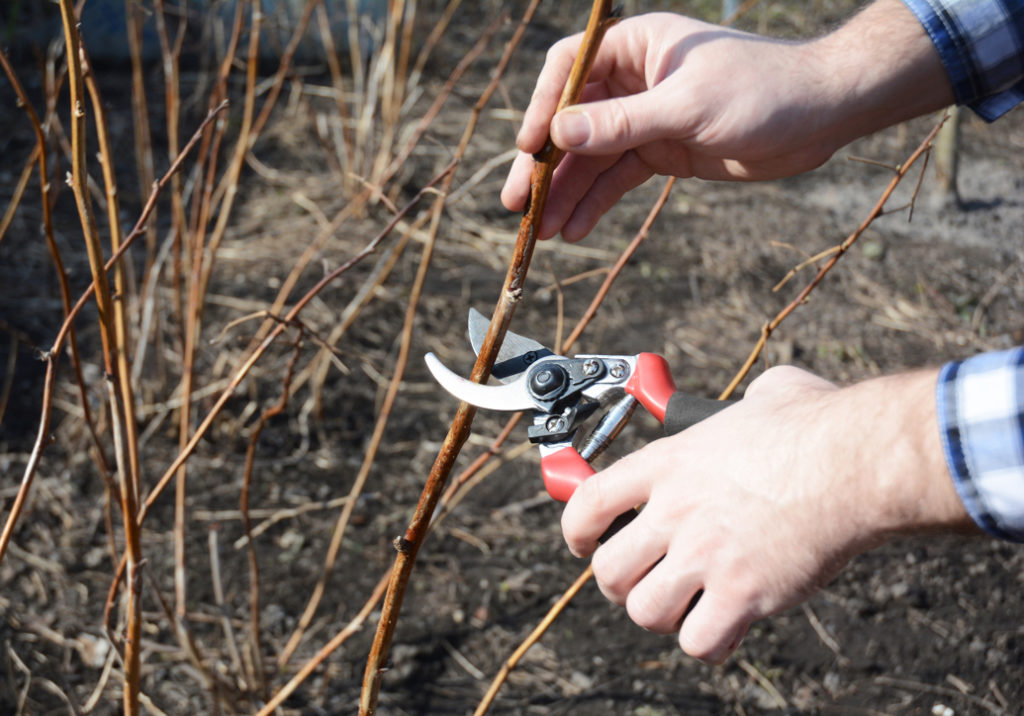
Pruning in late winter means that over the winter months, the plants should have stored plenty of carbohydrates in their roots, which leads to healthy growth the following year.
If you opt for double cropping (see below), then you may undertake additional pruning in the summer.
However, this is not an option that I would necessarily recommend.
How To Prune Autumn Varieties
When you prune these types of raspberries, things are generally very simple.
First of all, when planting out new bare-root raspberries over the winter months, prune all canes to within 25cm of the ground.
Usually, for the annual prune, all you need to do is cut off all the canes at ground level.
Double Cropping
However, with some specific raspberry cultivars, you can prune a little differently in order to aim to achieve a second harvest in one year – a technique known as double cropping.
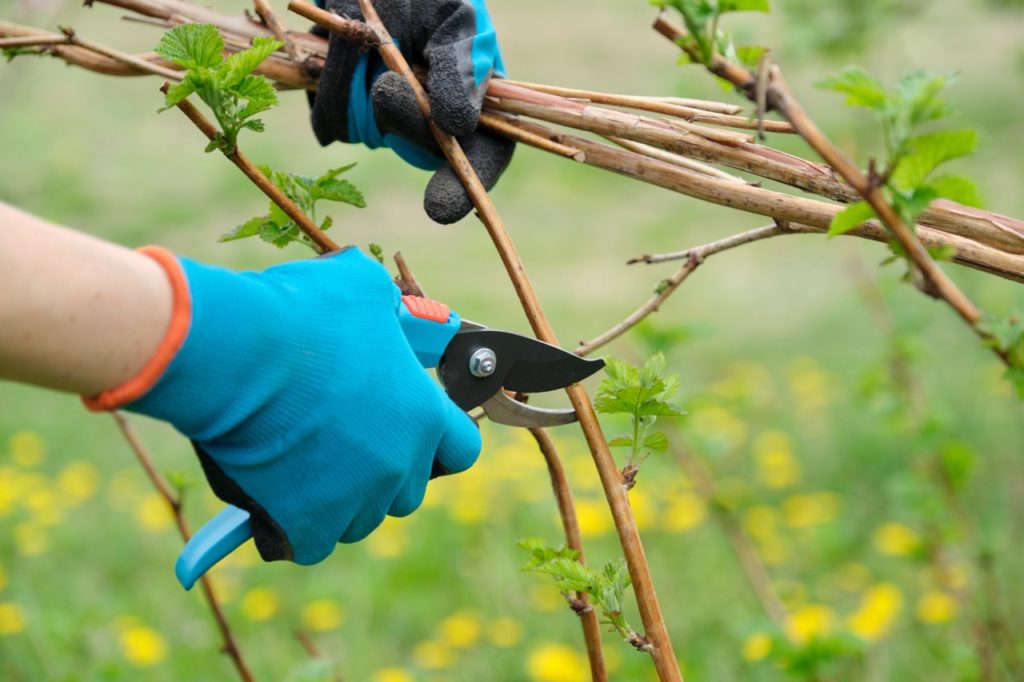
If you are aiming for double cropping, rather than cutting off all the canes at ground level, you will select the strongest 6-8 canes and leave those canes at around 1m in height, before cutting off all the others to ground level.
Double cropping is said to be useful for those who do not have enough space to grow both summer and autumn fruiting raspberries in their gardens.
When you prune in this way, you can get a small earlier crop as well as your main harvest.
However, it is important to note that this treatment only works with some raspberries of this type and not with all.
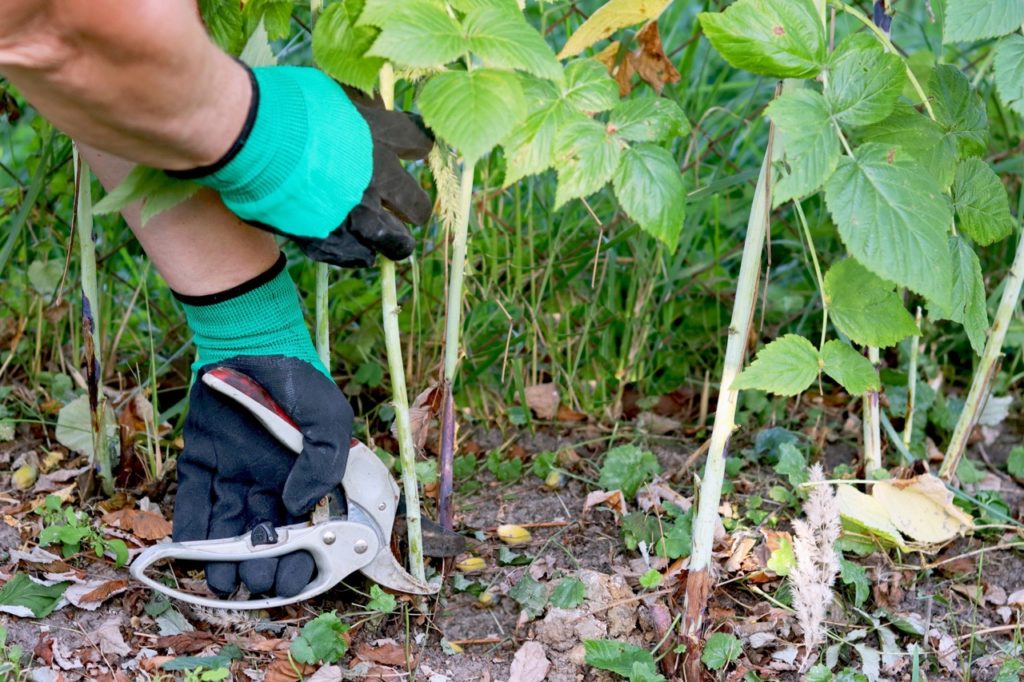
Also, splitting the harvest can reduce the quality of the fruits, which is why I would always recommend growing both types of raspberry mentioned in this guide rather than trying to get a double crop from autumn fruiting raspberry varieties.
However, if you do decide to opt for this pruning strategy, the canes that you left at 1m in height should be cut down to ground level straight after they finish fruiting in the summer.
A simple pruning regime for your raspberries will help make sure that you get a great raspberry crop year after year.
